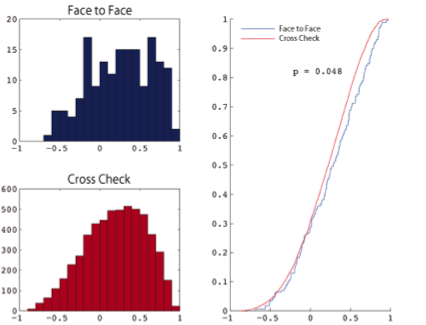3. Understanding human “empathy”
“Empathy” lies at the heart of our “fundamentally social mind.” The rapid transfer of pain responses, fear, excitation, etc. within a group may serve adaptive functions for the more gregarious social animals to effectively prepare to deal with acute changes in their immediate environments (e.g., the sudden emergence of predators). Specifically, effective responses involve the monitoring/copying of conspecific’s behaviors and adjusting of an individual’s own physiological-behavioral states in advance. However, the adaptive functions of the higher-order “cognitive empathy”, which is considered to be unique to the human species, remain largely unknown. This project aims to understand how both “primitive” and “higher-order” empathy may interact to shape our behavior with a focus on the transfer of pain responses across humans. We aim to shed light on the cognitive and neural processes that underlie the “higher-order” empathy of humans through behavioral-cognitive experiments, fMRI scanning, and physiological measurement and to compare the human results with findings from other non-human socially gregarious species.

Japan Society for the Promotion of Science, Grant-in-Aid for Scientific Research on Innovative Areas, “Understanding Roles of Empathy for Large-scale Cooperation in Human Societies” (PI: Tatsuya Kameda, 2013-2017)